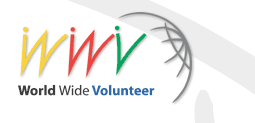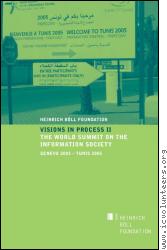A laboratory for new mechanism: Volunteerism as a building block for multi-stakeholder approaches (MSAs)Click to Download visions_in_process_ii.pdf (3.8M) 16 November 2005 © Heinrich Boell Foundation, Visions in Process II, The World Summit on the Information Society, Berlin, Germany IntroductionTo many, the World Summit on the Information Society (WSIS) process has been a laboratory: Its innovative mechanisms hold the potential to serve as effective models to help shape future UN meetings and summits, as well as other processes involving multiple stakeholders. In order to realize this potential, it seems critical to step back and to evaluate the achievements of WSIS, both in terms of its success in attaining its original objectives, and its potential for structural replication elsewhere. While it is premature to draw final conclusions regarding the WSIS process, this article outlines some initial findings on the structure of the meeting and overall success in implementing its recommendations and policies. In the second part of the article, we describe some positive results stemming from the active participation of one specific constituency, the volunteer sector. The volunteer sector first became involved in the process of the WSIS in 2002, at the African Regional Conference in Bamako. Since then, volunteers and volunteer organizations have actively contributed to its preparatory process, the Geneva summit, and the Tunis phase. We conclude that some of the lessons learned in the volunteer sector are particularly relevant to future efforts to build both effective multi-stakeholder relationships and successful partnerships. At the end of this paper, we detail the unique qualifications of volunteers to impact these processes. Contents
Multi-stakeholder evaluation process as the first step to post-WSISIn several ways, WSIS has served as a testing ground for innovative approaches. It is the first UN summit focusing on the Information Society, a new and complex concept. Additionally, it has been a laboratory for innovative modalities of participation and input into UN processes, based on a MSA, involving governments, civil society, the private sector and international organizations. It is also the first summit to be held in two phases, rather than structured as a one-phase event with follow-up meetings. Praised by many for its inclusive approach, comments about the WSIS overall have ranged from the resolutely critical to the highly optimistic. However, for this article, we will consider specifically the lessons learned from WSIS regarding multi-stakeholder mechanisms. There is much ongoing dialogue about the necessity for such processes, as governments acknowledge that they need to work with other stakeholders to deal with issues as complex as the Information Society and its transformation into a knowledge society. Considering that there is clearly work left to be done to refine a model for multi-stakeholder involvement, it seems that one of the most pressing needs is to develop a way to evaluate the quality and value of multi-stakeholder participation in WSIS. The success of WSIS as a multi-stakeholder process can only be evaluated based on whether all stakeholders have not only been able to participate, but also feel that, ultimately, their input has had a positive outcome and impact. While it is beyond the scope of this paper to outline specific methods for evaluating the success of the entire WSIS process from the perspective of all stakeholders, we nonetheless urge that such an evaluation be undertaken. This would necessitate the following steps:
Different mechanisms for the evaluation of WSIS and the development of good multi-stakeholder models have been proposed recently, such as, for example, the creation of a United Nations Multi-Stakeholder Partnerships Agency (http://www.unmsp.org). In addition, in Saint-Petersburg in May 2005, UNESCO was encouraged to create a working group focusing on multi-stakeholder partnerships (MSPs, http://www.unmsp.org/DOCS/RecommendationsSection08-final.pdf). If such a working group is created, it would make sense for it to lead the evaluation process of WSIS, comparing it with other UN mechanisms, drawing on existing resources, such as the Cardoso Report, to see how it can best serve as a precedent for future international meetings. The multi-stakeholder working group could act as a think-tank involved in the follow-up activities to WSIS. Also during the Saint-Petersburg meeting, a civil society working group was launched, focusing on multi-stakeholder dialogue. This launch has the potential to be an important step, addressing a second, pressing need in the larger effort to create effective multi-stakeholder processes: it could help clearly explain to all the importance of civil society's participation in local, national and international decision-making. The new working group could allow civil society to demonstrate once more that its very role as a key actor in such political and diplomatic processes makes it a catalyst, helping new ideas find their way to the negotiating table. It could show, in other words, that civil society is a driving force in international processes such as WSIS, expressing and defending sometimes critical views, but also bringing added value, negotiating a space and occupying it well. Multi-stakeholder follow-up mechanisms are essential to ensure that the example of WSIS is not just filed away as an innovative past event, but rather used as a building block, providing good models that lay out a clear method with which to engage the multiple entities, establishing a situation where individual stakeholders push for a MSA for their own reasons and interests. External linkshttp://www.boell.de/downloads/medien/visions_in_process2.pdf Posted: 2005-11-16 Updated: 2010-1-05 | ||









